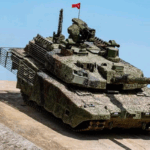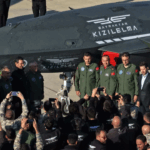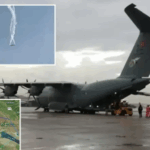Summary by Geopolist | Istanbul Center for Geopolitics:
The GJ-11 stealth drone, also known as Sharp Sword, has been observed in a growing number of roles that indicate it will be employed as a wingman for manned fighter aircraft. This suggests a more extensive strategy in Chinese military aviation to integrate unmanned systems into more intricate operations. The integration of drones that can conduct both reconnaissance and strike missions, which effectively complement conventional manned aircraft, is indicative of China’s efforts to improve its air combat capabilities. Modernizing its military assets has advanced significantly with this progression.
Essential Features of the GJ-11’s Function and Abilities:
- The GJ-11 incorporates sophisticated stealth technology, rendering it challenging for hostile radar systems to identify.
- Its stealth features enable operation in hostile settings, conferring a strategic advantage.
The drone is anticipated to function as a steadfast wingman to piloted combat jets, assisting them in diverse operations. - This position entails augmenting firepower, executing electronic warfare, and doing surveillance operations.
- The GJ-11, outfitted with advanced sensors and armaments, is capable of executing reconnaissance and strike operations.
- It can collect intelligence, observe adversary movements, and strike targets with precision-guided missiles.
- The integration of the GJ-11 with manned aircraft augments the overall combat efficacy of the Chinese Air Force.
- This collaboration facilitates more intricate and synchronized activities, utilizing the advantages of both manned and unmanned systems.
- The GJ-11’s creation signifies substantial progress in Chinese drone technology.
- It demonstrates China’s capacity to manufacture advanced military technology that can compete internationally.
- The deployment of the GJ-11 signifies a transition towards increased autonomy and adaptability in military operations.
- It emphasizes China’s dedication to modernizing its military and sustaining a competitive advantage in aerial combat.
- The developments in unmanned aerial systems, such as the GJ-11, exemplify a broader trend in military aviation, wherein drones are progressively assuming functions traditionally designated for manned aircraft. This not only improves operating capabilities but also mitigates the risk to human pilots in high-threat areas.







